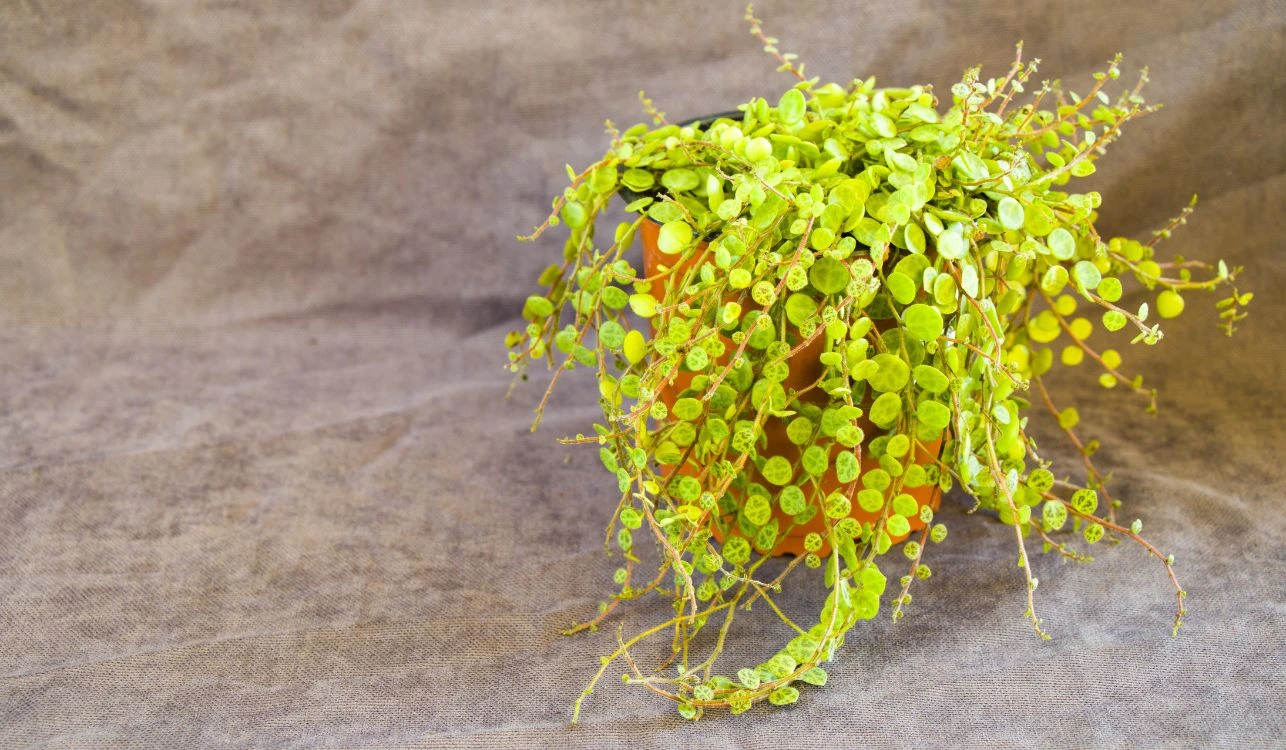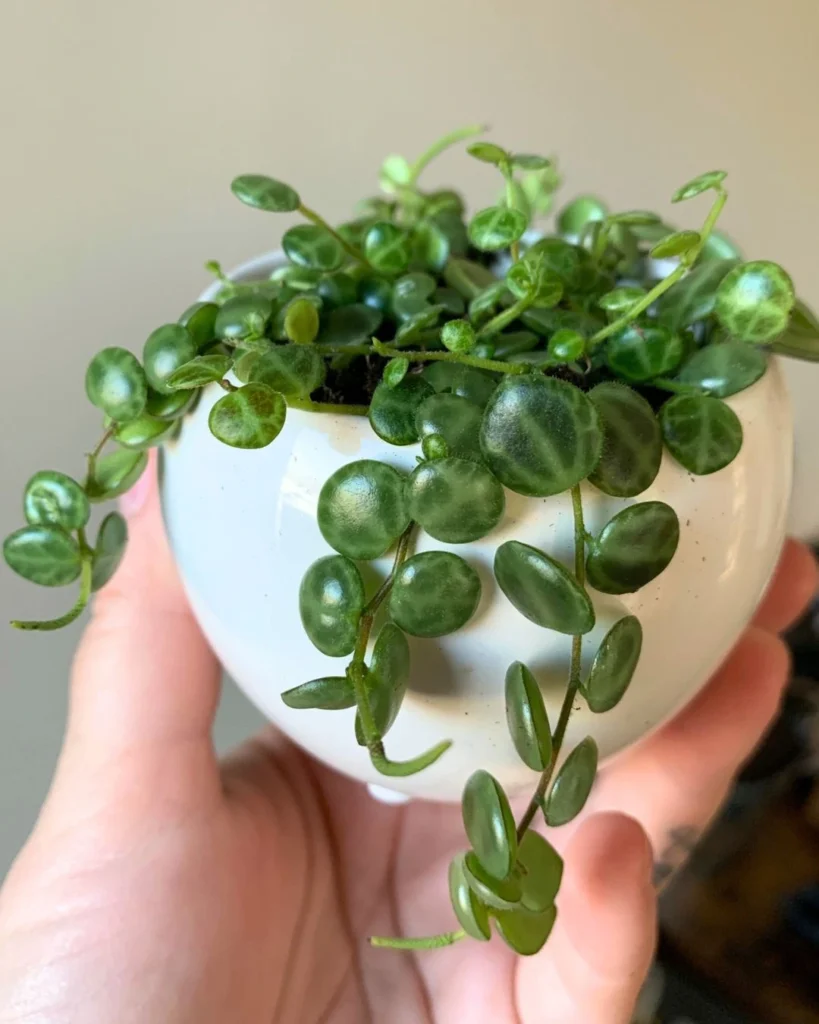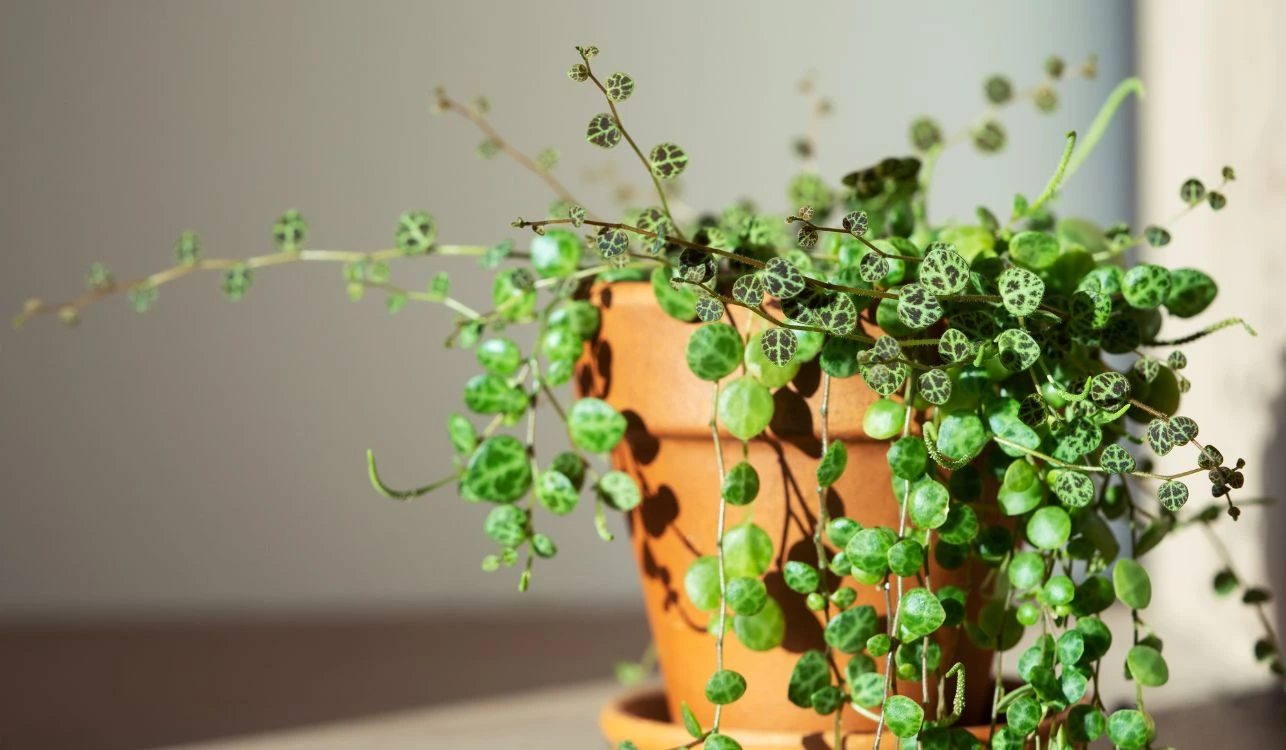
The String of Turtles, scientifically known as Peperomia prostrata, is a perennial, semi-succulent, and charming plant that has captured hearts with its unique beauty and ease of care. It belongs to the Piperaceae family, the same family as other peperomias, and is native to tropical forests in South America, from northern Brazil to Ecuador, where it grows as an epiphyte, climbing tree trunks.
Its leaves are the highlight, with patterns resembling the shells of turtles, hence the common name. The leaves are small, succulent, heart-shaped to rounded, with vibrant green, dark green spots, and raised stripes that give this plant a unique appearance. The String of Turtles is a trailing plant that reaches a maximum height of 7.9 to 11.8 inches, making it ideal for hanging baskets, trailing pots, and even as ground cover in shaded areas.
Its stem is thin, delicate, and branched, ranging from 0.2 to 0.5 inches in diameter, with a compact and prostrate growth habit, forming a dense and lush carpet of leaves. When it blooms, it produces elongated, erect inflorescences, like small rat tails above the foliage. These inflorescences contain numerous tiny flowers, with secondary ornamental importance. Besides its aesthetic beauty, the String of Turtles has intriguing physiological properties, such as its ability to absorb water directly from the air, making it an excellent choice for humid environments, such as winter gardens and terrariums.
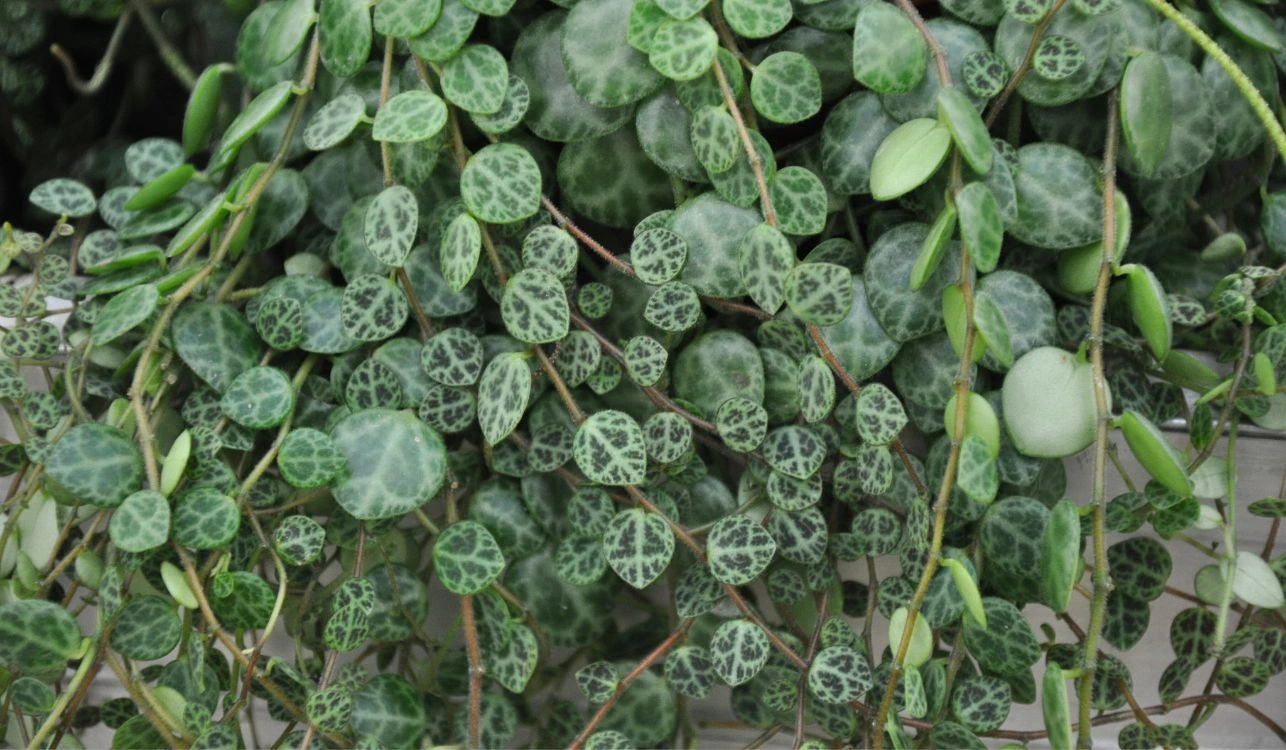
The String of Turtles is a versatile plant when it comes to landscaping and decoration. Its unique foliage and attractive patterns make it a lovely addition to shade gardens, shaded balconies, and well-lit indoor spaces. It has delighted succulent collectors and Urban Jungle enthusiasts, adding its charm and curiosity to collections, where it is proudly displayed in beautiful macramé hangers or on shelves. Furthermore, the small leaves, reminiscent of turtle shells, have a playful appeal, especially to children, and can stimulate their interest in gardening and botany.
It can be grown in hanging pots, where its trailing branches create a cascading effect, or as ground cover in shaded, foot-traffic-free areas. When used in terrarium arrangements or miniature gardens, the String of Turtles adds a unique and natural dimension.
Its adaptability to indoor environments with diffuse light makes it a popular choice for offices, bathrooms, and living rooms, where direct sunlight may be limited. However, it’s essential to remember that this plant does not tolerate low light conditions, and spaces with low light can be supplemented with artificial lighting. It should also be protected from extreme cold, especially temperatures below 50°F. It does not tolerate frost or extended dry periods. Ideally, it should be cultivated in temperatures between 68°F and 82°F, with a relative humidity above 60%.
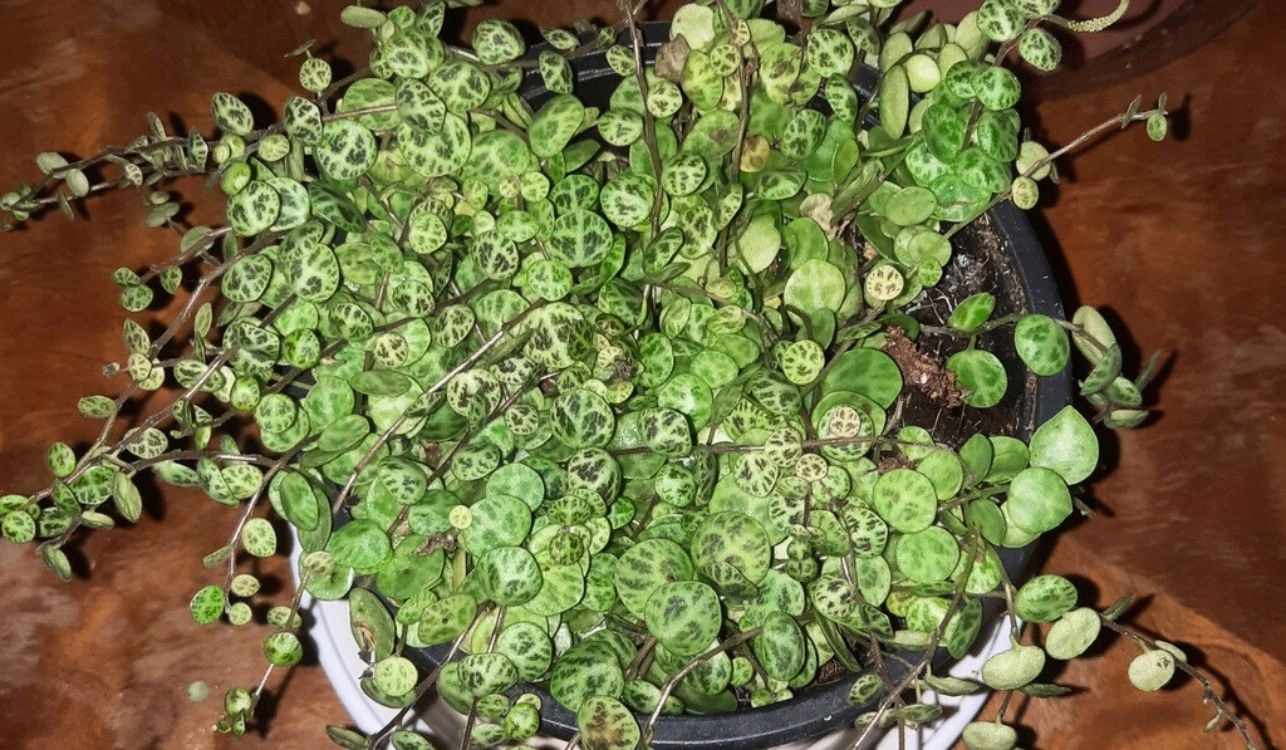
In terms of lighting, the plant prefers bright indirect light to partial shade. Avoid direct exposure to the sun all day, as it can damage the leaves. Also, steer clear of dry environments with drafts or air conditioning, as it can cause leaf wilting and hinder the development of your String of Turtles.
Regarding the soil, well-draining substrate rich in organic matter is ideal. Keep the soil slightly moist but avoid overwatering, as root rot can occur if the soil remains waterlogged. Repot every 2 or 3 years to renew the plant’s vigor. Choose pot-type containers, which are wider and shallower, facilitating plant spread and water drainage. Fertilize during spring, summer, and autumn, using slow-release or succulent-specific fertilizers.
Propagation of the String of Turtles is relatively simple and can be done through stem cuttings or division of the clump. For propagation by stem cuttings, simply cut a piece of the stem with some healthy leaves and place it in moist substrate. You can even create a makeshift greenhouse by covering the pot with a cut plastic bottle or transparent plastic.
After a few weeks, new roots and shoots will start to develop. For clump division, carefully remove the plant from the pot and separate the parts, ensuring that each division has healthy roots. Transplant the divisions into individual pots with fresh, airy, and well-draining substrate.
